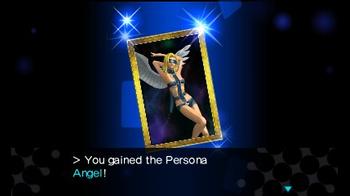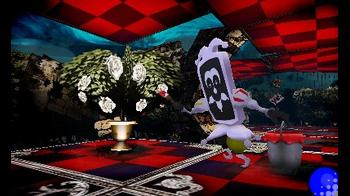
Persona Q: Shadow of the Labyrinth Review
Persona Q: Shadow of the Labyrinth is a turn-based dungeon crawler RPG in the vein of Atlus’ Etrian Odyssey series, starring characters from Persona 3 and Persona 4. Gone are social links, calendar-structured gameplay, and randomly generated field layouts. Here, we find complex mazes and the tools required to map them as you explore dead ends and navigate traps.
While I personally don't have a history with the Etrian Odyssey series of games, I was nonetheless excited to see what Persona Q would bring. The Persona series is known for an engaging combat system, but field gameplay was more simple and mostly acted an avenue to fight battle after battle rather than anything more involved. Knowing that one of the focuses of Persona Q would be on dungeon traversal and navigation, I was very curious to see how this crossover would pan out.
To players coming from Persona 3 and Persona 4, the difference in level design will be the most dramatic and notable change. Getting through an area is not as simple and making your way to the end, fighting battles along the way. Instead, you'll find complex and lengthy dungeons, and the best way to get acquainted with these dungeons is, of course, the map you draw for yourself on the lower portion of the 3DS.
Those who have a history with this subgenre are probably familiar with the map making and might find delight in creating detailed charts and notes. Persona Q offers many drawing tools and icons to work with. Luckily, for those who don’t want to deal with this aspect, they can turn on automapping to generate the chart as they walk through the labyrinth. This navigation is at the core of the experience, and the overall maze design does a stellar job hitting a good balance between layout, aesthetics, and satisfying puzzles.
The combat system is one of the main highlights of the game, offering a lot of player agency in how to approach enemy encounters. First of all, you have a large cast of characters to choose from, each with their strengths and weaknesses. Just like in Persona, success is best achieved in forming a party that compliments each other well. Making sure you have elemental attacks, healing abilities, and stat boosts at your disposal is always something to keep in mind.
Persona Q goes even a step further here with the use of the Sub-Persona. While each character has an unchangeable set of skills tied to their main Persona, everybody is allotted a Sub-Persona slot to offer more abilities to their arsenal. As is usual with the Shin Megami Tensei and Persona series, these helpers gain levels and skills, and can be fused together to form even stronger creatures.
Additionally, skills can be added to each main Persona with skill cards found throughout the game or earned from fusion. That means a character’s skillset come from the main Persona, Sub-Persona, and cards. This all leads to a very flexible system that emphasizes proper party building and battle strategy.
The battle system itself is round-based in nature. You select your team’s abilities and then the turn plays out in order of agility. Hitting an elemental weakness puts a character in a boosted state, which allows them to act first during the next turn in addition to ability costs being waived. If enough characters end a turn in a boosted state, the option to perform an All Out Attack will appear, heavily damaging the entire enemy party.
With a high degree of player control, challenging enemies, and strategic combat, Atlus has crafted yet another great battle system in Persona Q. Rather than placing emphasis fully on experience and stats, when a player is met with a difficult enemy, combat is designed to advocate a different approach to the encounter. Knowing the ins and outs of your party’s skillset is key.
Those familiar with the Etrian Odyssey series might be happy to know that FOEs (an abbreviation for Fusis Oikein Eidolon) also make an appearance here. These tough and menacing shadows roam the halls on the field as minibosses, and figuring out how to get around them acts as their own sort of puzzle to be solved. If a player feels up to it, they can take on a FOE head on to gain large amounts of EXP and valuable items.
The overall presentation of is delightful and charming. Character models are animated and lively, and the world itself is colorful and fun to look at. There are a lot of small visual touches throughout that add to the overall charisma of the game - things like seeing Elizabeth fidgeting in her chair or Akihiko arm wrestling with Kanji in the background as you navigate the menus.
Persona Q doesn’t slouch on the musical front either. Several remixes of other Persona music can be heard, in addition to many original tracks. Battle themes are upbeat and catchy as the music in the series tends to be, and dungeons have great rhythmic tracks too, making the maze crawling that much more enjoyable.
Some of the auxiliary mechanics in place are not as well implemented as they could be, however. The optional quests you get during the game mostly involve backtracking to a place in the level to pick up an item, and returning it for the reward. More than one request is activated by reaching a specific square on the map, at which point you need to leave the dungeon to properly 'start' the quest, and then head back to the same square you activated it from. It’s not a glaring flaw, but it’s not terribly interesting to carry out. There are a few quests though that involve chatting with the characters and making dialogue choices, which is about the closest the game will bring you to social links.
I also never had any difficulty having money to spend, as ‘Power Spots’ found in the areas, which give you loot items to sell, are a little too easy to exploit. Basically from the very beginning, I had more money than I knew what to do with.
The narrative isn't too outward in Persona Q – in fact, the storyline is barely present until you get to the final labyrinth. However, there is a plethora of character interactions to look forward to. This title is in many ways pure fan-service, and getting to see how various cast members interact with those of the other game is simply entertaining.
On the other hand, many of the characters channel their odd personality quirks a little more strongly than they do in their original games to some extent. This isn’t all too unexpected considering the large cast and the tendency to throw references towards the player, but it does leave the characters feeling like slightly watered-down versions in this outing. Nonetheless, the interactions are generally well implemented and fun.
Persona Q is a very easy title to recommend to fans of turn-based RPGs. With engaging dungeon crawling, a rock-solid battle system, and charming presentation and characters, this is a spinoff definitely worth your attention.


